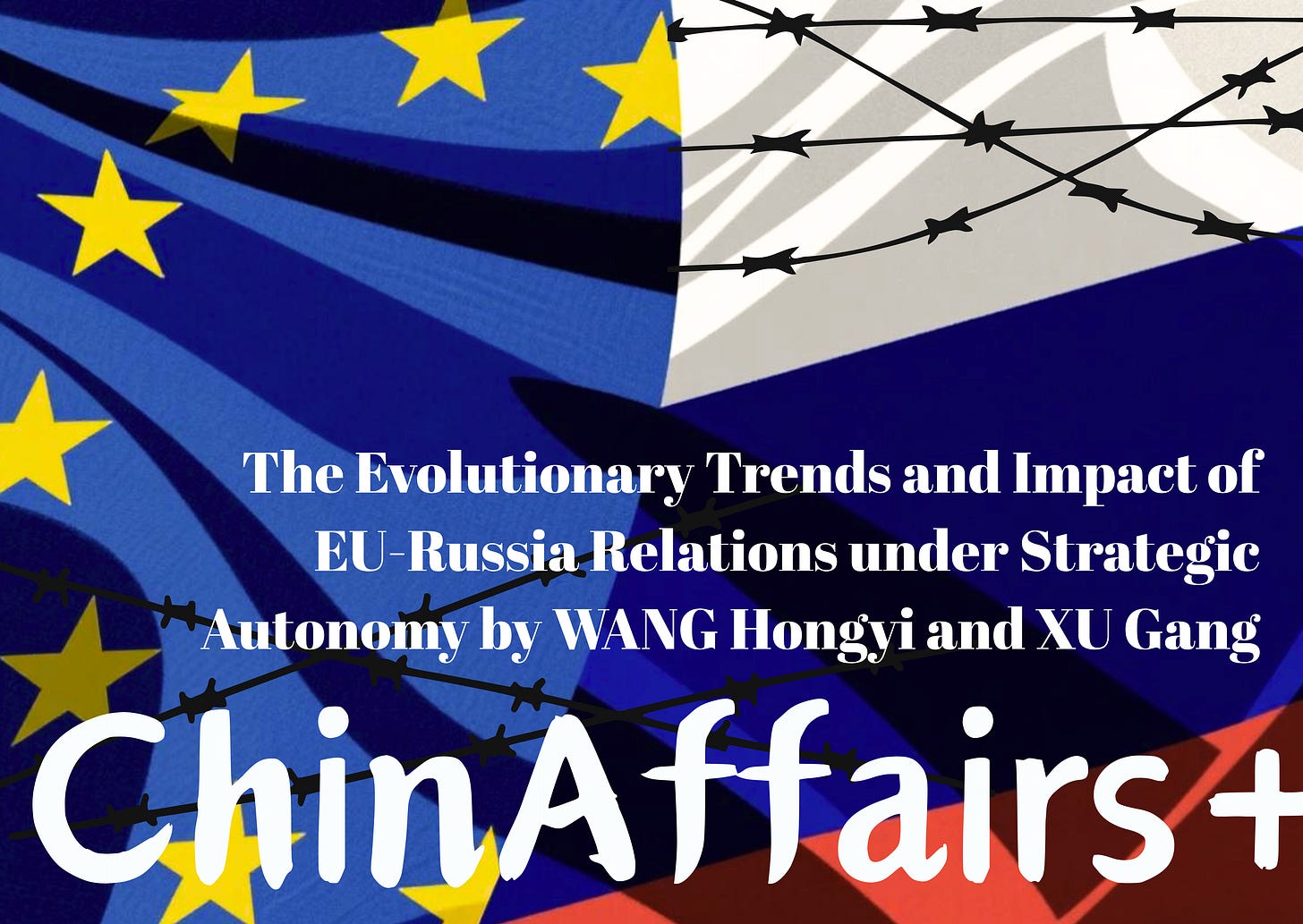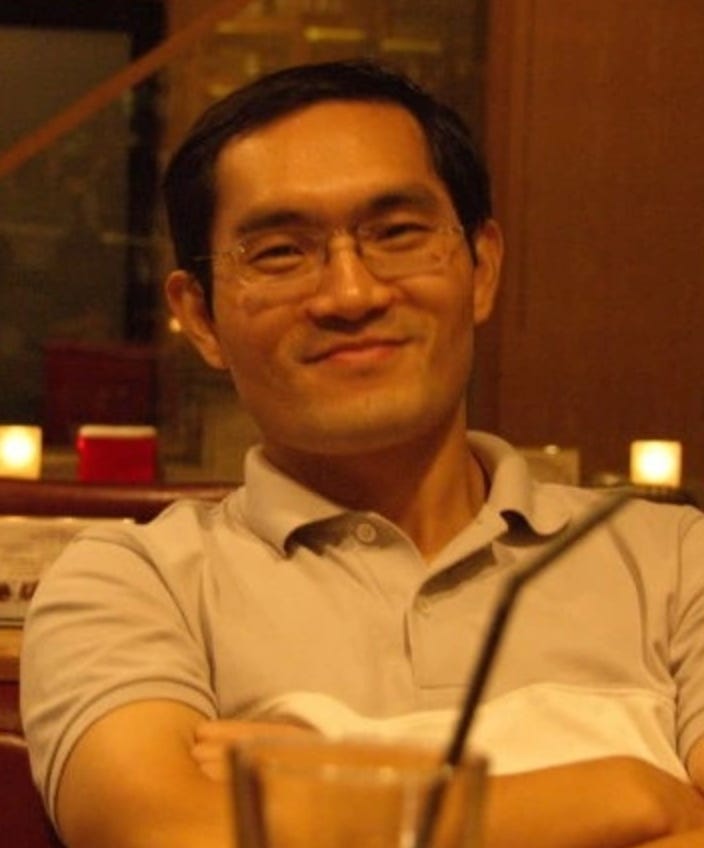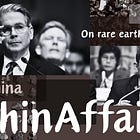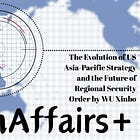The Evolutionary Trends and Impact of EU-Russia Relations under Strategic Autonomy by WANG Hongyi and XU Gang
Against the backdrop of the EU’s pursuit of strategic autonomy, the future evolution of EU–Russia relations will take on new dynamics.
Welcome to the 61st edition of our weekly newsletter! I’m SUN Chenghao, a fellow with the Center for International Security and Strategy (CISS) at Tsinghua University, Council Member of The Chinese Association of American Studies and a visiting scholar at the Paul Tsai China Center of Yale Law School (fall 2024).
ChinAffairsplus is a newsletter that shares articles by Chinese academics on topics such as China’s foreign policy, China-U.S. relations, China-Europe relations, and more. This newsletter was co-founded by my research assistant, ZHANG Xueyu, and me.
Through carefully selected Chinese academic articles, we aim to provide you with key insights into the issues that China’s academic and strategic communities are focused on. We will highlight why each article matters and the most important takeaways. Questions and feedback can be addressed to sch0625@gmail.com
Today, we have selected an article written by Wang Hongyi and Xu Gang, which focuses on the EU-Russia Relations under the Context of European Strategic Autonomy.
Summary
Against the backdrop of current transatlantic relations and the Ukraine crisis, this paper examines new developments in EU–Russia relations under the framework of “strategic autonomy.” The author argues that Donald Trump’s return to the White House has delivered multiple shocks to U.S.–EU relations, accelerating the EU’s drive for strategic autonomy in foreign policy and reshaping the structure of EU–Russia interactions.
On the one hand, the EU must coordinate with the United States to address the Russian threat; on the other, it is compelled to respond to “bullying” from the United States in the economic and political spheres. Dual pressures from Russia and the United States have galvanized an intra‑EU consensus to pursue strategic autonomy.
Guided by the concept of strategic autonomy, the EU quickly forged a consensus on aiding Ukraine and countering Russia. This consensus has not only promoted internal harmonization of the EU’s Russia policy, but has also caused China–EU relations to be increasingly driven by security factors, and has enabled the EU to exert a countervailing constraint on U.S.–Russia interactions.
The paper first analyzes the internal and external drivers of the evolution of EU–Russia relations; second, it examines adjustments to and trends in the EU’s policy toward Russia under strategic autonomy; then it outlines the challenges the EU faces in the course of pursuing strategic autonomy; and finally, it assesses the implications of changes in EU–Russia relations for China–EU relations and U.S.–Russia relations.
Why It Matters
The current international landscape is turbulent, and U.S‑Europe‑Russia relations have entered a period of adjustment. Since Donald Trump returned to office, the Russia‑Ukraine conflict has not undergone a fundamental improvement. Against this backdrop, Europe faces unprecedented security and diplomatic choices. This article examines in depth the European Union’s accelerated drive for “strategic autonomy” to meet these challenges, helping readers understand how the EU is repositioning its role amid U.S‑Russia competition.
The author emphasizes that “strategic autonomy” reflects the EU’s strategic awakening and security anxieties as geopolitical rivalry intensifies, signaling Europe’s attempt to move beyond the long‑standing dynamic in which “the United States is the main actor and Europe is subordinate,” so as to avoid being marginalized in great‑power competition.
In addition, EU‑Russia relations bear directly on the security of the European continent and the trajectory of the Russia‑Ukraine war, and they occupy a pivotal position in interactions among China, the United States, and Europe. The article links the evolution of EU‑Russia relations with developments in China‑EU relations and U.S‑Russia relations, analyzing how the EU’s hardline consensus on Russia is generating securitization spillover effects for EU‑China relations, while a more autonomous European stance toward Russia will in turn influence U.S. policy toward Russia. On this basis, the article deepens understanding of fractures within the transatlantic alliance and the logic of the EU’s self‑strengthening, offering a new lens for observing the future trajectory of U.S‑Europe‑Russia relations.
Key Points
Drivers of the evolution of EU–Russia relations
(1) U.S.–Russia relations shape EU–Russia relations
In the U.S.–EU–Russia triangle, the EU’s position is asymmetric relative to the other two. When U.S.–Russia relations move toward cooperation, EU interests are often marginalized; when U.S.–Russia relations are tense, the EU becomes an instrument of U.S. offshore balancing. During the Trump administration, U.S.–Russia relations were highly volatile, especially with regard to Ukraine, Syria, and the Nord Stream 2 pipeline; brief thaws were followed by rapid cooling. The United States strengthened deterrence against Russia through NATO’s eastward enlargement and military deployments, profoundly influencing the nature of the EU’s policy toward Russia.
(2) Divergent threat perceptions among EU member states
After the Cold War, Europe—particularly the countries of Central and Eastern Europe—developed a strong “Russophobia” for historical reasons, driving the eastward enlargement of the EU and NATO. After the 2014 Crimea crisis, Central and Eastern European countries as well as Western European states such as Germany and France diverged in their perceptions of the Russian threat: the former explicitly advocated a hard line toward Russia, while France and Germany tended to maintain flexibility in relations with Russia. This internal rift has continued to shape the EU’s overall policy toward Russia.
Trends in the EU’s Russia Policy in the Context of Strategic Autonomy
(1) Security: shifting from reliance on the United States to counter Russia to a “total mobilization” of European defense
Donald Trump’s return to office shook transatlantic relations. Vis à vis Ukraine in particular, U.S. retrenchment and wavering created a security crisis for Europe and pushed the EU to move from long‑term dependence on the United States to a strategy of autonomous security. In February 2025 leaders of major European countries, including the United Kingdom, France, Germany, Italy, Poland, the Netherlands, and Denmark, together with EU and NATO leaders, held an emergency summit in Paris to discuss Europe’s security after the U.S. shift. UK Prime Minister Keir Starmer even said he would not rule out sending troops to Ukraine if necessary. In March 2025 an extraordinary EU summit adopted the “Rearm Europe” plan, pledging €800 billion to build a “secure and resilient Europe” and planning €150 billion in loans to member states for defense investment. These steps show that, given the shock of Trump’s administration’s stance on Russa--Ukraine, the EU is determined to defend European security interests through its own capabilities.
(2) Economy: maintaining a hardline sanctions policy against Russia
On sanctions against Russia, the EU has maintained a hard line. By July 2025 the EU had imposed 18 rounds of sanctions on Russia. Although the Trump administration, amid efforts to restart U.S.-Russia economic and trade engagement, at one point sought to push Europe to scale back sanctions, Europe held to its position, refusing to lift or soften economic sanctions on Russia and refusing to let up on efforts to weaken Russia’s economic strength and sources of military funding. However, the EU faces serious internal divisions on sanctions. Hungary and Slovakia, highly dependent on Russian energy, oppose further tightening. The sustainability and unity of EU sanctions decisions face severe challenges.
(3) Politics: upholding a “support Ukraine, counter Russia” stance while seeking an autonomous voice
Sharp swings in Russia policy during Trump’s second term have greatly reduced European states’ trust in the transatlantic alliance. Trump sought to pressure Europe to reduce aid to Ukraine in exchange for concessions from Russia. Europe widely viewed this as a betrayal of allies by the United States. In the face of U.S. backsliding, the EU has become more determined to maintain aid to Ukraine and measures to politically isolate Russia. At the start of 2025 Poland held the EU’s rotating presidency. In a speech to the European Parliament, Polish Prime Minister Donald Tusk stated that Europe must strengthen its own military capabilities and address security issues independently rather than relying solely on the United States. In addition, the EU has actively sought a stronger autonomous voice in Russia‑Ukraine negotiations, refusing to lift sanctions before Russia shows genuine good faith. Europe also seeks to play an indispensable role in any talks between Russia and Ukraine to safeguard European interests to the greatest extent.
Limits and constraints on EU‑Russia relations under strategic autonomy
(1) Contradictions between collective and member‑state interests
The EU’s Common Security and Defence Policy is essentially the product of intergovernmental consultation and cooperation among the member states. Unified action requires aligning the interests and positions of all members. At present, EU policy toward Russia concentrates on two areas: defence build‑up and economic sanctions. In both domains, notable divergences of member‑state interests exist. For example, in the defence‑industrial field, Europe’s major defence‑industrial powers led by France advocate using EU funds primarily to develop domestic industry to safeguard Europe’s long‑term autonomy in defence. Countries such as Poland prefer to procure equipment directly from foreign firms in the United States or South Korea to respond quickly to imminent security threats. Such contradictions severely hinder progress toward integration of Europe’s defence‑industrial base.
(2) Contradictions between values and material interests
The EU has long upheld values such as freedom, human rights, the rule of law, and democracy, and regards them as the foundation of its legitimacy. After Trump took office, the traditional transatlantic values‑based alliance was seriously shaken. The United States pursued “America First,” deepening rifts in transatlantic relations. A sharp divergence has opened between Europe’s values‑based diplomacy and its material interests. The rise of populism within Europe has further intensified fragmented perceptions of Russia. On one side, EU elites represented by Germany and France continue to adhere to a traditional values‑based diplomatic stance. On the other, right‑wing populist forces such as Italy’s Meloni government are more pragmatic and call for a return to material interests. This split makes it difficult for the EU to form a stable and unified position in strategic decision‑making toward Russia.
(3) A dilemma between across‑the‑board securitization and a rational approach to security
Since the full‑scale outbreak of the Ukraine crisis in 2022, the EU has pursued “securitization” of its Russia policy across almost all domains. As regards energy, the EU rapidly implemented a thorough de‑Russification strategy, causing the economic ties between the EU and Russia to rupture quickly. Although this made EU policy toward Russia more unified and resolute in the short term, it has also impeded a return of EU‑Russia relations to a rational and pragmatic track. The author argues that the EU must avoid securitizing its Russia policy, gradually restore rationality, and progressively resume economic, trade, and people‑to‑people contacts with Russia to exit the security predicament.
Spillover effects of changes in EU-Russia relations on China-EU and U.S.-Russia relations
(1) Impact on China-EU relations
The rise of the EU’s strategic autonomy not only changes the European security landscape but also spills over into China-EU relations. EU policy toward China has begun to stress security and “de-risking,” narrowing the room for economic cooperation. At the same time, under U.S. economic and security pressure on Europe, the EU has had to reassess its China policy. European leaders such as Ursula von der Leyen have emphasized that China and the EU should uphold the global trade order, yet have tightened restrictions on China in the security and technology fields. This broad securitization trend makes it difficult for China-EU relations to quickly return to a normal track centered on economic cooperation, and their future development will continue to face greater uncertainty.
(2) Countervailing effects on U.S.-Russia relations
Greater EU strategic autonomy exerts a clear countervailing force on U.S.-Russia interactions, weakening U.S. leadership on the Russia-Ukraine issue. The Trump administration at one point sought to end the war in Ukraine quickly through a “land-for-peace” plan, but strong European opposition and resolve to aid Ukraine caused the plan to fail. In addition, the Trump administration attempted to restart the Nord Stream 2 pipeline in exchange for concessions from Russia, an effort that also met strong resistance from European countries such as Germany and France. The EU’s hardline policy toward Russia has imposed clear constraints on U.S.-Russia relations.
Conclusion
Against the backdrop of the EU’s pursuit of strategic autonomy, the future evolution of EU–Russia relations will take on new dynamics.
First, the acceleration of the EU’s building up of its strategic autonomy is pushing EU–Russia relations toward security confrontation. Spurred by the shock of the Trump presidency and its attitudes towards the Ukraine conflict, the EU has overcome long‑standing internal divergences in perceptions of Russia and forged a hard‑line consensus, marking a new stage in Europe’s strategic awakening. The EU is no longer content to serve as a subordinate instrument of U.S. policy toward Russia, but is seeking to safeguard its security interests on its own.
Second, despite major progress towards strategic autonomy, there are clear limits to the unity and durability of the EU’s Russia policy. Owing to the EU’s inherent constraints as a union, the diversity of member‑state interests, and capability shortfalls, the EU’s policy of supporting Ukraine and confronting Russia will be hard to sustain. The author stresses that the rise of extreme nationalism in some European countries will further disrupt internal EU consensus and may force adjustments to Russia policy in the future.
Finally, under the EU’s strategic autonomy, the new pattern of EU–Russia relations has moved beyond the bilateral realm and is exerting broad geopolitical effects. On the one hand, it casts China–EU relations in a stronger security light and makes China–EU cooperation more difficult; on the other, it alters the balance of the U.S.–Russia contest, forcing the United States to factor Europe more heavily into its Russia policy and rendering Russia’s strategic environment more complex. Therefore, the EU’s strategic autonomy still needs to be tested in practice.
About the Author
Wang Hongyi:Ph.D. in Law (International Relations). Joined Beijing Foreign Studies University in July 2021. Currently an associate professor with the School of European Languages and Cultures and the BFSU Center for Central and Eastern European Studies, a Ministry of Education National and Regional Studies Base. Named a BFSU “Rising Scholar” in December 2023. Also serves as a junior research fellow at the Center for Central and Eastern European Studies, East China Normal University, and a part-time research fellow at the Institute for Central and Eastern European Economic and Trade Cooperation, Ningbo University; young council member of the China-CEEC Think Tanks Exchange and Cooperation Network. Research interests focus on diplomacy and security theory of small and medium-sized states, European integration, the politics and foreign policy of Central and Eastern European countries, China-CEEC relations, and the history of overseas Chinese in the CEE region.
Xu Gang:A research fellow and deputy division director at the Institute of Russian, Eastern European and Central Asian Studies, Chinese Academy of Social Sciences (CASS). He is also the deputy secretary‑general of the CASS Belt and Road Research Center. He graduated from the School of International Studies, Peking University, in 2012 with a Ph.D. in Law. His research focuses on Balkan affairs, China–Central and Eastern Europe relations, and EU foreign policy. Representative works include the monographs Regional Cooperation in the Balkans and European Integration and Ideas and Practice of Balkan Union: 1797–1948, and the coauthored volumes Research on the Current State of the Socialist Movement in the Former Soviet and East European Region and Romania (2nd ed.). He has led more than ten projects, including the National Social Science Fund Youth Project “The European ‘Refugee Crisis’ and the Problem of Populism.” He previously worked in the Political Section of the Embassy of China in Bosnia and Herzegovina.
About the Publication
The Chinese version of this article was published in International Relation Studies(《国际关系研究》). This journal, founded in 2013, is a comprehensive academic journal sponsored by the Institute of International Studies, Shanghai Academy of Social Sciences. The journal focuses on major theoretical and practical issues concerning the transformation of the contemporary international system and China’s path of peaceful development, covering research areas such as international relations theory, global governance, great‑power strategy, and regional hotspots. International Relations Studies has been selected as a CSSCI source journal for 2025–2026 and is indexed in CNKI and CQVIP, among other databases. It has repeatedly been named the “Most Popular Political Science Journal” by the National Philosophy and Social Sciences Documentation Center.











